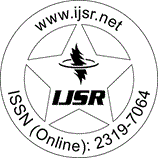Downloads: 4
India | Nanotechnology | Volume 14 Issue 9, September 2025 | Pages: 979 - 983
Watermelon Peel-Based Fluorescent Carbon Quantum Dot Synthesis, Characterization, and Applications
Abstract: The development of nanomaterials from renewable resources has emerged as a sustainable approach for producing low-cost and environmentally safe functional materials. In this study, carbon quantum dots (CQDs) were fabricated from watermelon peel using a one-step hydrothermal route. The as-prepared CQDs were uniformly dispersed in aqueous medium, exhibited nanoscale dimensions, and displayed strong blue?green fluorescence under ultraviolet illumination. Characterization through transmission electron microscopy (TEM), Fourier-transform infrared spectroscopy (FTIR), UV?Vis absorption, and photoluminescence (PL) analyses verified their amorphous carbon structure, excitation-dependent luminescence, and high photostability across a wide pH range. Application experiments demonstrated that the CQDs served as selective fluorescent probes for Pb2+ and Hg2+ ions, exhibiting significant quenching effects while retaining stability in the presence of other competing metal ions. These findings highlight the potential of watermelon peel?derived CQDs as cost-efficient, sustainable nanomaterials for environmental sensing applications.
Keywords: Carbon quantum dots, Watermelon peel, Hydrothermal synthesis, Fluorescence, Metal ion detection
How to Cite?: Anjali Padey, Dr. Namita Bhardwaj, "Watermelon Peel-Based Fluorescent Carbon Quantum Dot Synthesis, Characterization, and Applications", Volume 14 Issue 9, September 2025, International Journal of Science and Research (IJSR), Pages: 979-983, https://www.ijsr.net/getabstract.php?paperid=SR25514131531, DOI: https://dx.doi.org/10.21275/SR25514131531
